LOST 024 - One Shot Two Shot
Unpacking the TV show LOST — Season 2: Episodes 20-22
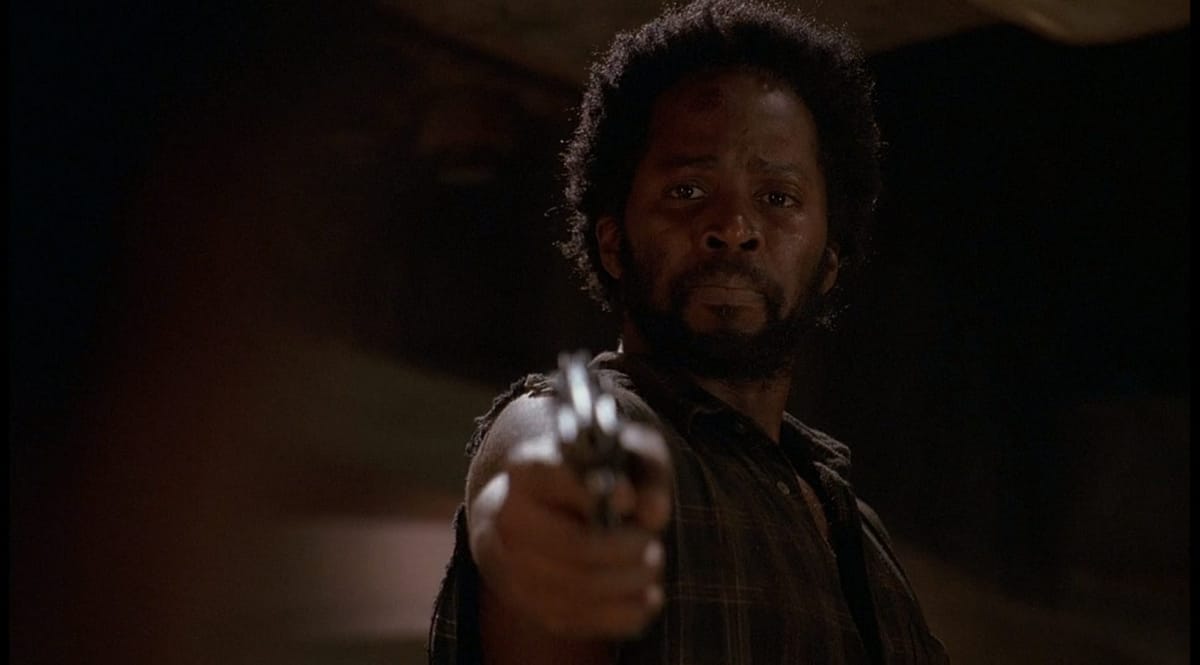
It’s been a few weeks, so it’s that time again. Let’s sing the theme song we all know and love:
♪♫When you are Lost you are Lost all the way,
from your first Dharma boss to your last candidate … ♪♫
Previously, on LOST: Oceanic Flight 815 broke into two pieces and that made it not be able to fly anymore, so it crashed. People survived! From both sections! How? Well, did I mention it broke apart above a magic island? Well it did. It’s a magic island. They’re magic survivors. If you don’t like the idea of magic survivors on a magic trans-dimensional time-traveling island, buddy, have I not got a show for you.
Haters to the side. Sit on a potato pan, Otis. Let’s get SOLOST, Egstel.
O B S E R V A T I O N
LOST has a reputation for having ended badly. While I understand why this is, I demur. I think one thing this show does best is endings, particularly its season-enders.
With this installment, I begin covering what I consider the first truly great run of LOST: the final 5 hours of Season 2. Season 1 was excellent TV but only scratched the surface. Season 2 deepened the mystery and broadened the canvas with the Tailies’ tale and Henry’s menace, but it spent a lot of time stuck in the bunker. But it’s here that LOST truly becomes LOST, telling a massive part of the main (heretofore buried) story.
It’s also the part of the story I find hardest to parse.
Let me just say it so it’s said: By the time this season is done, the sequence in the Swan will go un-entered. As a result, the universe will be destroyed, and then it will return … or at least I’ll be building a case that this is what we see happen. The universe will return because of the actions of a crucially important character we’ve barely met, and it will all go down in a way that contains many contradictions and confusions.
I’ll try to explain.
It could take a while.
May as well get started.
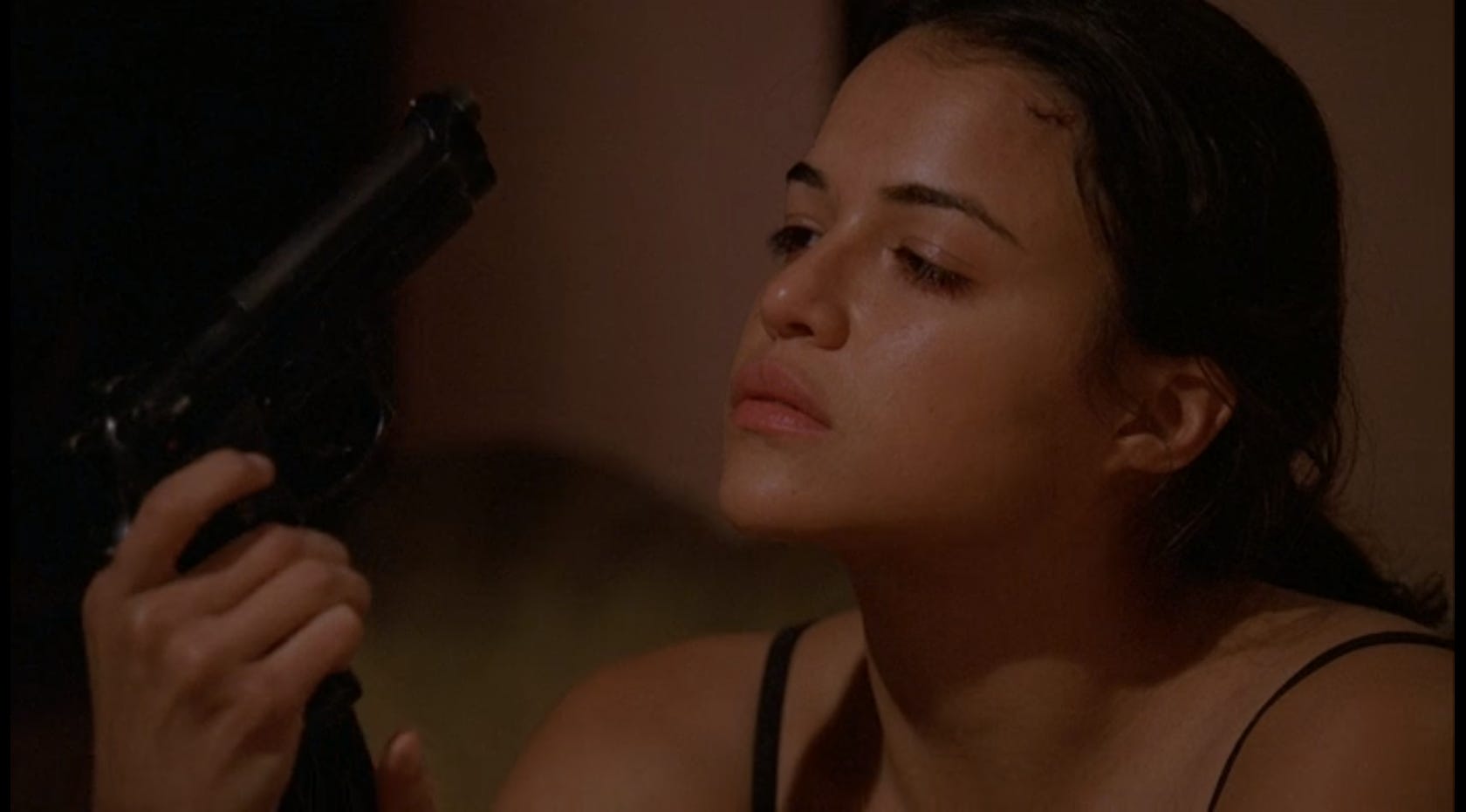
Episode 20: TWO FOR THE ROAD (Ana Lucia): Michael’s back! Michael’s front! Michael’s side-to-side! Michael’s also comatose (he’s probably faking, but we’ll get there). Jack and Kate haul him back to the Swan, where he tells them that the Others are easy pickings: a hungry and lightly armed tribe living with primitive supplies and equipment. Meanwhile Locke and Ana keep a secret: before Kack returned with Michael, “Henry” attacked Ana Lucia and nearly killed her, in an early demonstration of Ben Linus’ eerie physical prowess relative to an unimposing physique (which I take as an effect of Adversary-thrall, see also Ethan Rom, or Charlie effortlessly overpowering Sun).
Ana Lucia wants it kept a secret because—as we’ve learned from flashbacks—when somebody nearly kills her, she tends to kill them back. Locke keeps the secret for Lockish reasons. After he’d been re-restrained, Ben goes to work on Locke’s fragile psyche, telling him all sorts of Adversary-ial things, for example: that Locke is one of the good people in comparison to so many in his tribe who are bad people; that he, Henry, reports to a “great man, a brilliant man, but … not a forgiving man;” who had sent Henry to the Oceanics on a mission to bring Locke to join them. It’s an appeal to greater destiny and larger purpose, which is exactly what Locke craves, and which is exactly what makes Locke such a perfect mark1.
In the B plot, Libby is sweet on Hurley, and Hurley is sweet on Libby. Sayid is a good bro and suggests that Hurley take her to the same beach where he romanced Shannon. Hurley sets about doing this but is a loveably awkward doofus about girls and fumbles the plans very badly, until Libby takes pity on him and offers to go get supplies from the Swan so they can have their picnic. It’s very sweet. Also Jin sees them together and gives Hurley one of these …
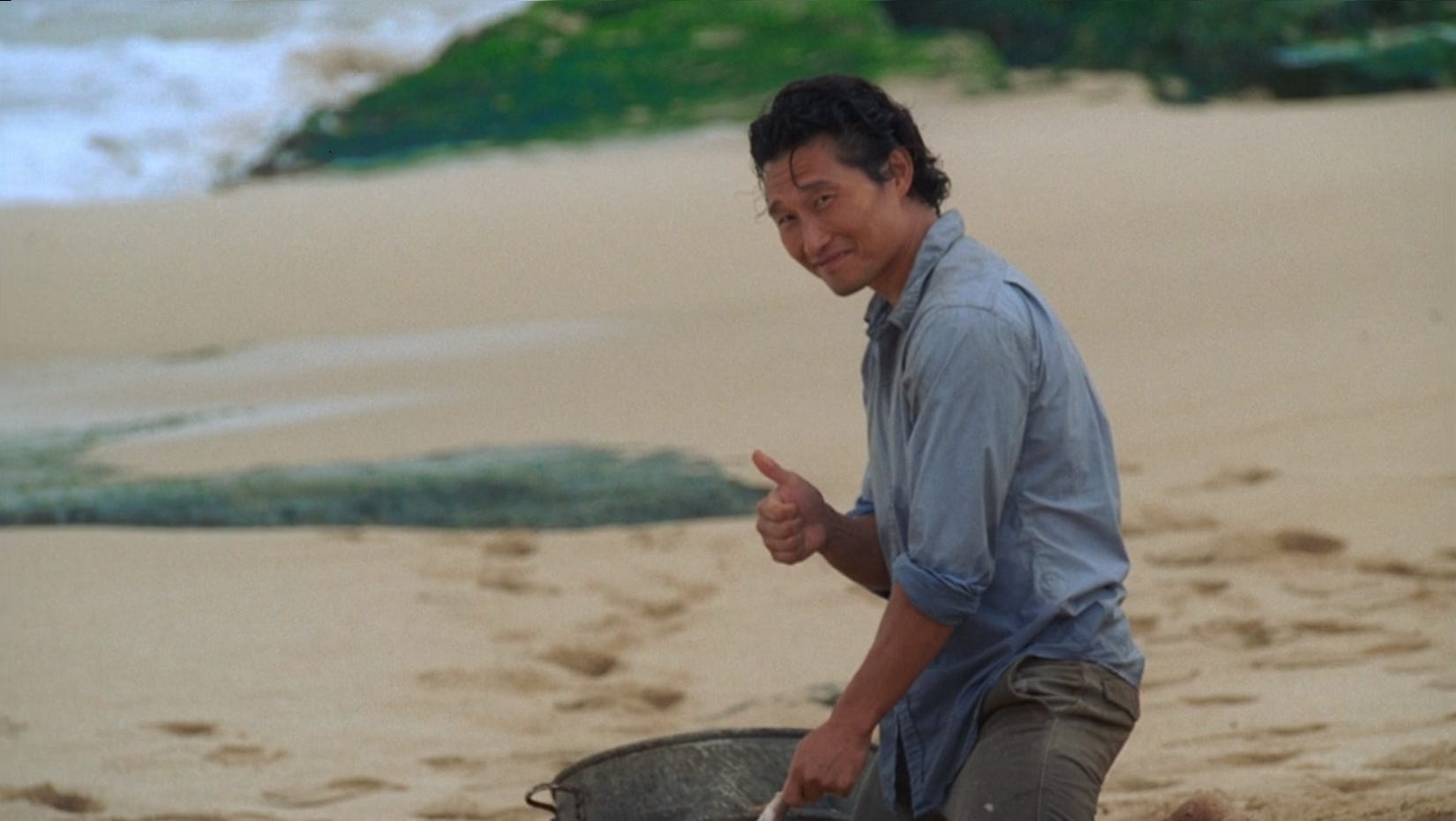
… and it’s magnificent.
Anyway: Ana Lucia gets a pistol off of Sawyer by seducing him and brings the weapon back to the Swan. She gives “Henry” a knife2 so he can cut himself loose, the better to plant it on him after she’s murdered him (look she is a cop), but in the end she can’t bring herself to repeat her destructive old patterns of retribution. It’s a moment of human growth—progress, in other words—which is exactly what we’ll eventually learn most interests The Island, and allows It to let somebody move on ...
Michael, leveraging his position as an aggrieved father of a kidnapped boy, offers to do the deed: he’ll kill “Henry.” Ana hesitates but gives him the pistol and the safe combination. Michael looks stricken for a moment, apologizes, then shoots her through the heart. A moment later he’s surprised by Libby, and he shoots her right in the blankets. He goes to the safe and opens it, then shoots himself (in the arm, but that’s not clear until next episode, or at least it wasn’t clear to me), leaving “Henry” free to escape, which, as we’ll find out next episode, he does. It’s one of the most genuinely shocking moments of the series, and of TV ever.
Good night, sweet Tailies. And flights of island spirits whisper you to thy rest.
End of Episode 20.
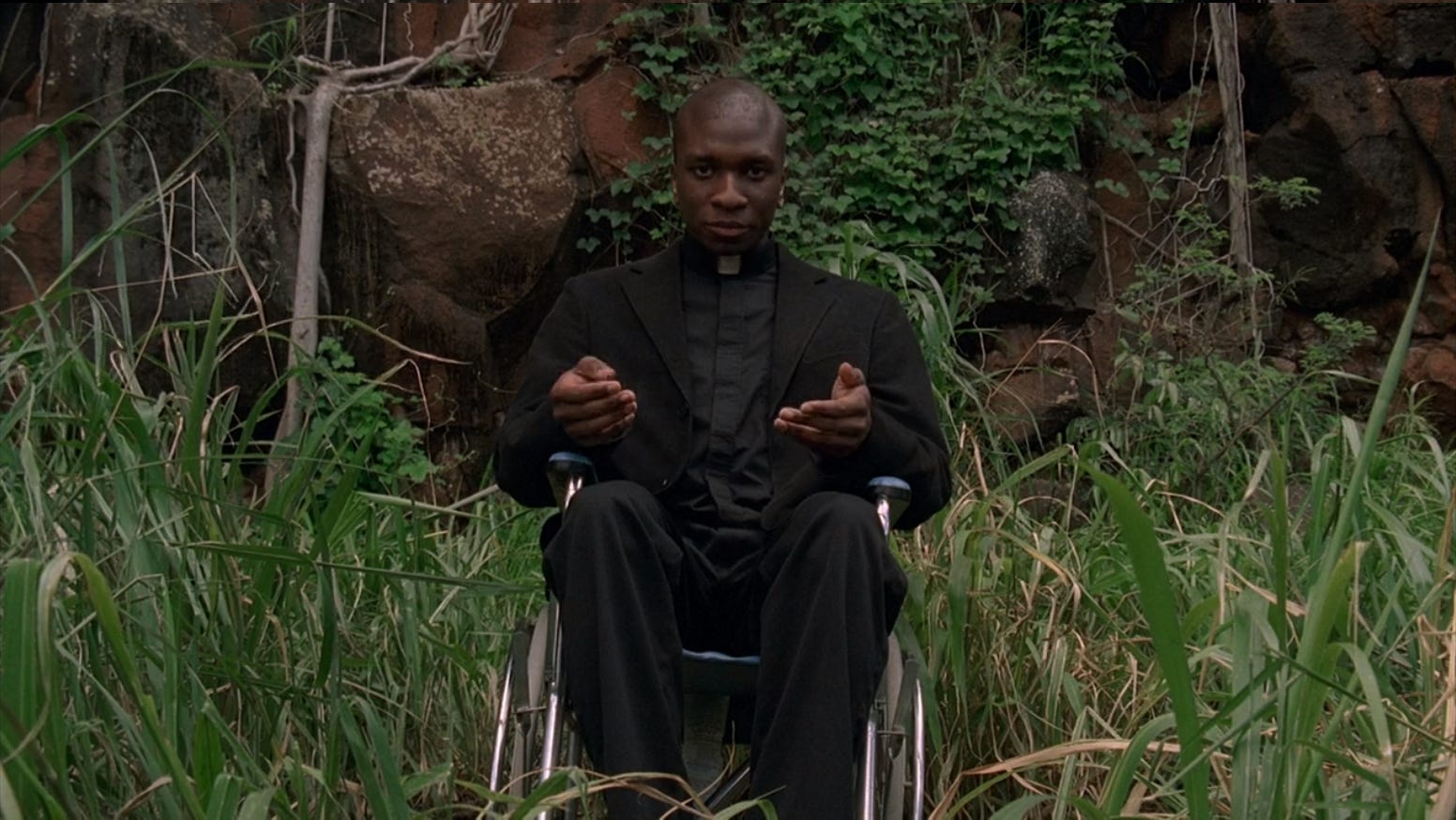
Episode 21: ? (Eko): Don’t think I’ve mentioned it, but for the last several episodes Eko has been building something while declining to say what it is, and he’s picked up a disciple along the way—Charlie, lapsed Catholic and onetime Locke acolyte. Now Ana comes to him as he builds and he confides in her: it’s a church, which he was told to build in a dream. But then she bleeds through a wound in her chest, and we know Eko’s still in dreamtime. Eko dream-jumps to the Swan, where Yemi, his deceased brother, sits at the computer. Yemi tells him “the work being done in this place is more important than anything” (which is true) and that, no matter the distractions, he must bring John Locke to "the question mark,” because Locke has lost his way and Eko needs to help him find his way again (which bringing Locke to the question mark will um not do). As the alarm starts to blare and the Swan starts to shake apart, the countdown clock flips to all question marks. Yemi also tells Eko to bring his axe.
Eko wakes with a startle.
Heading hatchward, Eko finds Kate, Jack, Sawyer, and Locke in the jungle, and The Gang Finds A Murder Scene. Under pretense of recapturing the escaped Henry, Eko compels Locke, via words and headbutts, to follow the rudimentary map Locke’s drawn from his remembered glimpse of the black light layout of various island bunkers—a diagram that has a ? at the center.
This brings them to the spot where the Beechcraft carrying Yemi’s remains fell and Boone died. In a wonderfully disorienting move, Locke has a dream that he is Eko3, compelled by Yemi to climb to the top of the cliff where the Beechcraft had been perched. When “Eko” reaches the top, Yemi is there, sitting in Locke’s wheelchair, and he kicks Eko off the cliff. Upon waking, Locke relays his dream to Eko, who climbs for real (the axe saves him) and, from that vantage, sees a “?” carved into the grass below.
Beneath the Beechcraft is another hatch. Behind the hatch is another bunker—The Pearl. In this bunker the men find another orientation video, featuring Dr. Marvin Candle (now going by a different name), who relays to the orientees of this bunker—the FLALFS—that they are meant to observe and report (via pneumatic tube) on the activities of the team manning the Swan. This team, says the video, believes they are carrying out a mission of vital importance … but they aren’t. They’re just taking part in a psychological experiment.
This isn’t true, by the way—as we’ll learn very soon—so we have to assume it’s the members of the Pearl who are part of some psychological experiment. Those Dharmaniacs, I tells ya. They just don’t know when to quit with the hoopla and the shenanigans.
In the B story, Libby is horribly wounded but still miraculously alive, and there is some near-unendurable tension for Michael that his dastardly deeds will be exposed if Jack is able to save her. But Jack realizes quickly that his efforts are hopeless: Libby is past saving. They use a bit of the heroin to ease her pain, and Hurley, who had been waiting for their date to begin, gets the very bad news in a heartbreaking wordless long shot.
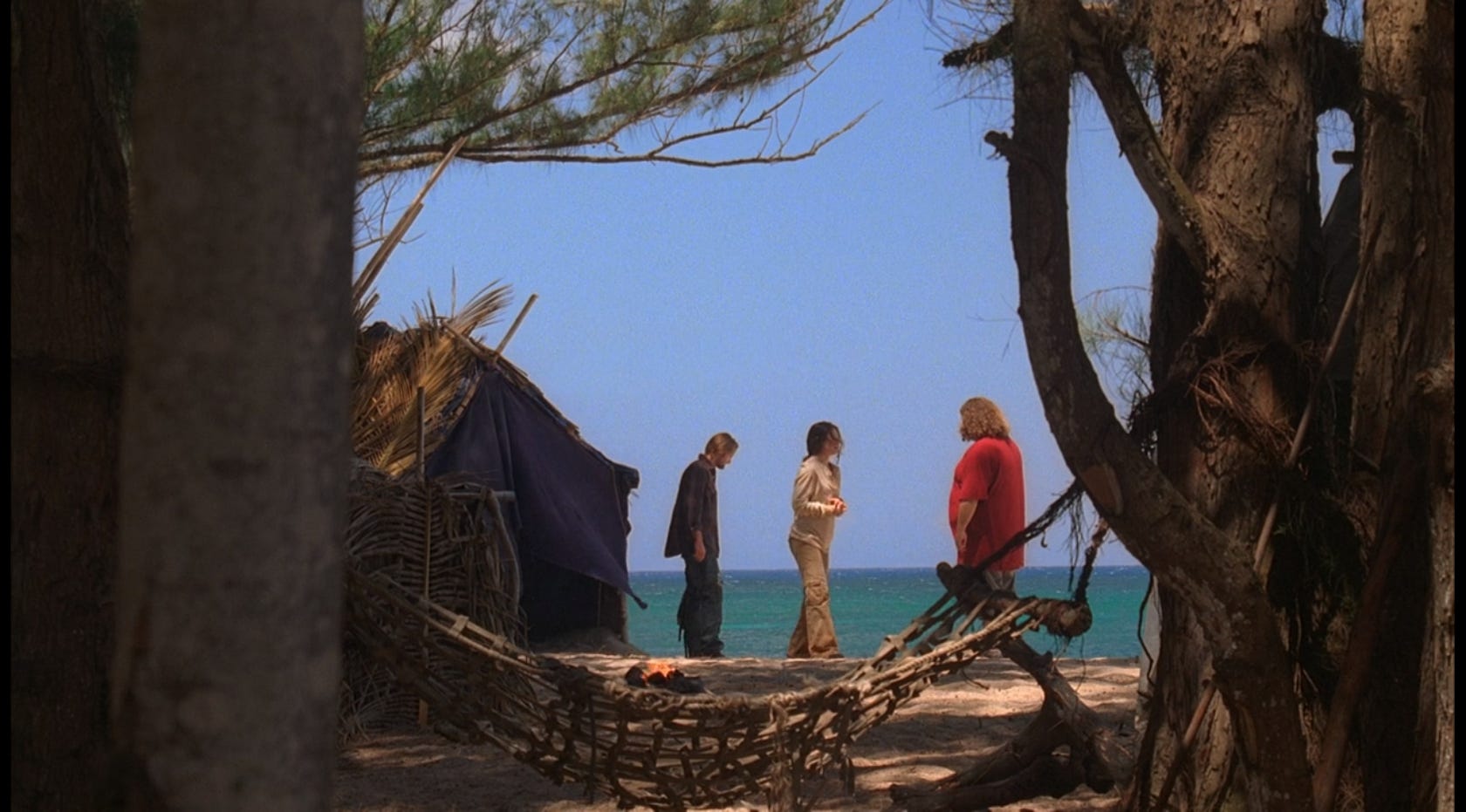
Hurley’s by Libby’s side when she passes, as she tries but fails to warn about Michael. It’s very sad, and leaves Libby as one of the most tantalizing “what if” unexplored character arcs of the run. Hurley never figures out why he recognizes her.
Meanwhile, Locke’s faith, badly shaken by “Henry’s” machinations, now collapses entirely. He abandons the hatch to sulk on the beach. Eko, having been warned about distractions by Dream-Yemi, rather perversely finds his faith only strengthened. He abandons his church (and Charlie4) and takes up his place in the Swan entering the sequence.
End of Episode 21.
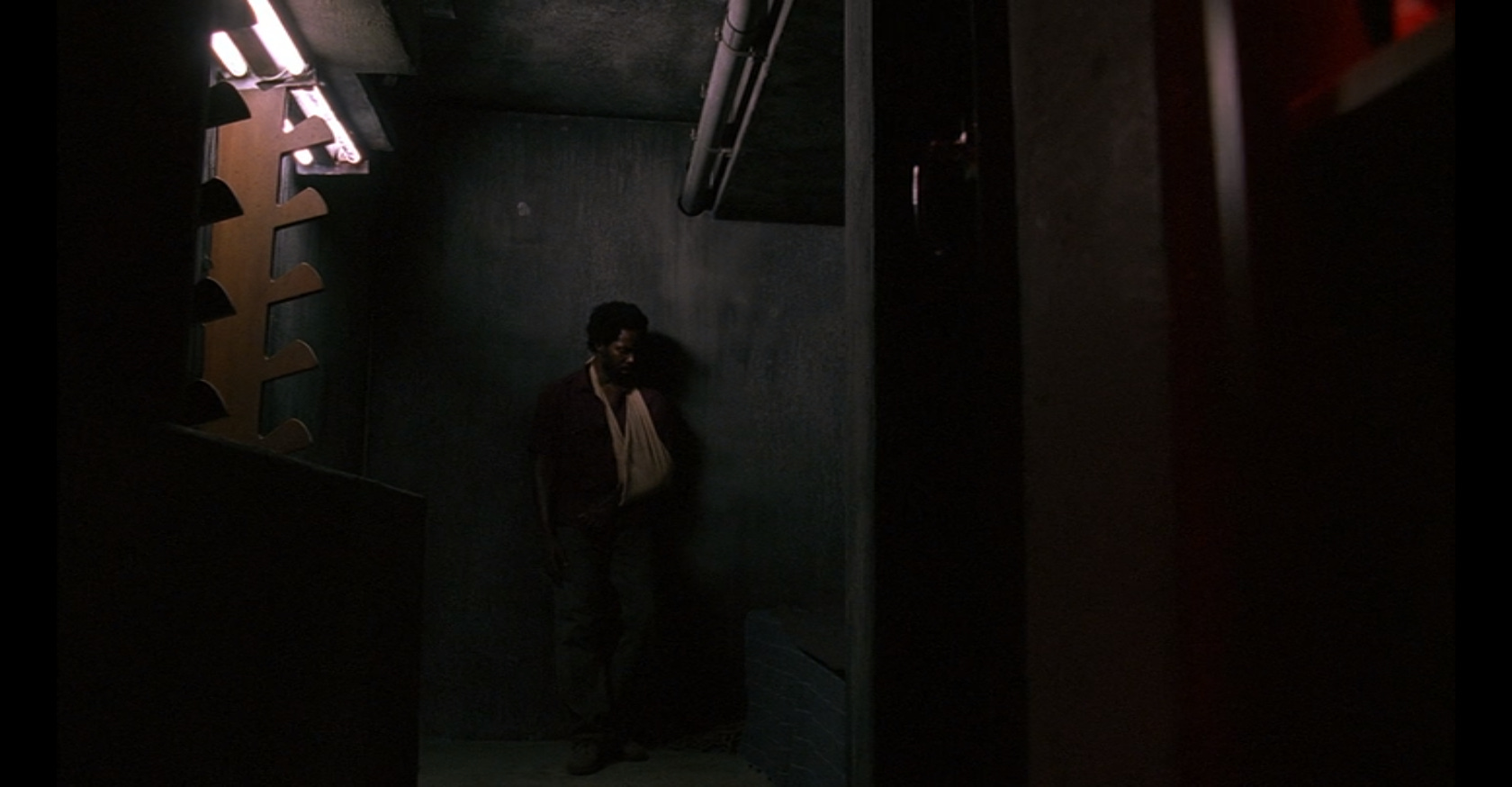
Episode 22: THREE MINUTES (Michael) Let’s have a moment for Michael: a very good man whose desire to be with a son who never stopped being taken from him led him to do a very bad thing—which shows that The Adversary uses even what is best in a person to corrupt them.
This episode flashes back and forth from the moment Michael conked Locke on the noggin, stole a gun, and left to rescue his son. It serves as a farewell showcase for Harold Perrineau, and it’s a great episode that parcels out its information for maximum dramatic tension, but it’s easily summarized if told chronologically. Michael was quickly captured by the Others, and brought back to a (staged) primitive village for interrogation by one of their members, the mysterious Miss Klugh, who asked questions that called Michael’s paternity (they also drew his blood, presumably for a test) and fitness for fatherhood into question. This is the moment when the tantalizing question “does Walt ever appear somewhere he isn’t supposed to be?” is raised. They let Michael see Walt for the titular 3 minutes as proof of life, then commanded him to return to his friends, free “Henry,” and then bring them the people on a list: Hurley, Jack, Kate, and “John Ford” (which is how we learn Sawyer’s name while the writers demonstrate that the Others know more about our heroes than the heroes know about themselves, so score one for narrative efficiency).
It has to be these 4 and only these 4. Why? Ask me next time maybe. Anyway, that’s what Michael does. When actual soldier Sayid is quite reasonably asked to join the war party, Michael flatly refuses on ill-considered pretexts. Sayid immediately realizes that Michael has flipped, and he shares this (correct) belief with Jack.
There’s a funeral for Ana Lucia and Libby. Hurley breaks our hearts again.
And then Sun sees a boat out on the water. It’s a sailboat.
Would you believe me if I told you it’s Libby’s sailboat?
End of Episode 22.
B E L I E F
To observe, perchance to believe. Aye, there’s the rub. For in that observation, what beliefs may come must give us pause.
Let’s do some really big beliefs this time. The first two I want to just set up for later, but I’ll end with the big tamale: The Adversary’s Reason for All This.
I promise.
1) The Dreamtime. The dreams were a big deal in Eko’s episode. I’m going to dig considerably deeper into this in a coming installment. For now, let me just say that I believe that both The Adversary and The Island do their primary communication through dreams, and that I believe that in this case Eko’s dreams were coming from The Island.
2) Connectivity. Maybe you notice I didn’t mention the (non-Michael) flashbacks. They were both good ones: Ana Lucia’s teaches us she came to Australia as Christian Shepherd’s bodyguard, and we learn here for the first time that Christian has a secret family in the outback. His daughter is … Claire! Claire is Jack’s sister! Whoa! Eko’s flashback has him investigating a miracle involving a girl who allegedly drowned and came back to life, and the girl’s father is … Claire’s psychic! Who claims he is a fraud as a psychic! But we know he’s lying! And his resurrected daughter comes to him with a message of encouragement, sent from beyond, from Yemi! Woah! The Island can heal people off-island, is the clear implication!
For the most part, I haven’t been mentioning all these connections, which have been many and varied, but what I want to say about them now is that people often were waiting for information that explains them all, and that’s the wrong approach: these connections are the information. They are how we begin to see a great truth of the story, which is that people who come to the island have been connected for a long time, and that some of them (like Claire’s psychic) have become at least somewhat aware of this fact, but most are (and remain) completely unaware.
This suggests things, which suggests other things. But we have different business today.
3) The Adversary’s Reason For All This. OK, here we go. I believe that The Adversary is trying to destroy reality itself. I’ve said that one many times before, but I want to really dig into it now: the what and the why.
Let’s lay out some basics, many of which we’ll only learn waaaay at the end of the series. These aren’t beliefs. These are things we’ll be told.
What The Adversary wants more than anything is to go home. But where is that?
What The Adversary is trying to do more than anything else is destroy The Island. But why is that?
Destroying the Island would destroy reality itself, and The Adversary appears well aware of this.
So: the way The Adversary goes home is by destroying reality itself.
From this I surmise that The Adversary is a being that remembers a state before reality: before the order of reality imposed by the being I’ve called The Island. The Adversary is what we might call homesick for a state before all the matter and time-space, and people, and the messiness of free will and possibilities and redemption and salvation and condemnation and damnation, in other words. It’s being and nothingness, and The Adversary wants nothingness.
This is something that I believe goes down to the very bedrock. Even The Adversary’s argument with The Island about the worthiness of humanity is only the why of it. The what of it is: It wants to destroy reality itself, and believes this can be accomplished by destroying the island, by releasing the energy—the entity I call The Island—at the heart of the island.
It wants to do that because to It, reality is not home—nothingness is.
Again: what The Adversary wants more than anything is to go home.
So everything It does—everything—is in service to this goal.
It tried to use Riccardus toward this end.
It tried to use the outsider Jacobian worshippers, who the Dharma Initiative called “hostiles,” toward this end.
It tried to use the Dharma Initiative toward this end.
It is trying to use Ben Linus and his group of heretical Jacobian worshippers who have occupied the former Dharma facilities to this end.
It is trying to use the Temple Jacobians—the true believers, and likely the most direct lineage back to the beginning of Jacob’s rule—to this end.
It tried, long ago, under different guise, to use ancient Sumerian and Egyptian visiters to this end.
It is trying to use our heroes, the survivors of Oceanic 815, to this end. It is testing them to see which might help, and which might need to be disposed of.
It will try to use whoever comes after the Oceanics to this end.
It is engaged in many many many many many simultaneous plots and plans to accomplish this. It will try anything and is trying everything it can, on as many levels as it can. It will abandon one plan in order to pursue a more direct plan, if a more direct opportunity arises.
One of these plots involves building John Locke’s faith in his own destiny as a predestined favored Chosen One—and also creating such undeniable signs and portents of this idea to convince all the on-island Jabobians of the same proposition—so that John Locke can become the unified leader of the various Jacobian island factions, so that The Adversary can then arrange for John Locke’s death, so that It can take on the appearance and nature of John Locke, so that It can finally access Jacob and kill him, so that It will be freed of all of Jacob’s rules and restrictions, so that It can finally release the light at the heart of the island, so that It can destroy reality itself and return to Its home, which is nothingness.
We’ll see this plot unfold over the next many seasons, in fact.
But a more direct plot—the one we are watching right now—is this: to simply crush John Locke’s faith, so that Locke, in his anger at realizing his faith was misplaced, will lash out in retribution and make sure the sequence isn’t entered, which will cause the breach at the Swan station to build up and destroy the island, which will destroy reality itself, so that The Adversary can return to Its home, which is nothingness.
Perhaps its most direct plot is convincing The Island that humanity is unworthy of reality, so that It will abandon Its grand experiment, which is reality, so that The Adversary can return to Its home, which is nothingness.
It’s best if, when pondering any mystery on this show, you return to this core what.
Why did Dharma come to the island? The Island drew them there. But The Adversary made sure that they worked at puncturing into the light at the island’s heart.
Why does The Pearl exist? My belief is that when the puncture was sealed, The Adversary manipulated Dharma people to create a reporting structure that would, if exposed, naturally lead anybody entering the sequence to doubt the value of doing so, so that it could potentially use that doubt someday, and that day is today.
And as I said before, what I believe is, we’re going to see The Adversary succeed.
Reality will end.
We’ll see it all go down … next time.
L O S T
Next Time: All Is LOST
Thank you for reading The Reframe. This post is public so feel free to share it.
A.R. Moxon is the author of The Revisionaries, which is available in most of the usual places, and some of the unusual places, and co-writer of Sugar Maple, a musical fiction podcast from Osiris Media which goes in your ears. He was walking through the jungle just the other night; he heard a big rumble and thought it was a fight.
If you watch it knowing this is Ben Linus, it’s a fascinating statement. It’s sort of a lie but also sort of he means himself but also sort of he means The Adversary, but also he means the version of Jacob that he’s built up in his head, because at his core Ben is very much like Locke: a man made dangerous and tractable by his desperate yearning to be an important and valued part of something larger. He’s like Gollum to Locke’s Bilbo: the halfling that’s carried the one ring far too long. ↩
Goodwin’s knife, actually—nice bit of continuity, that. ↩
“Eko” is limping in the dream, just as John has been. I love that touch. ↩
Charlie finds the remaining Heroin Marys in Sawyer’s stash and pitches them into the ocean as Locke watches. Locke’s too shattered to look too approving; Charlie no longer needs anyone’s approval. Some lovely closure. ↩

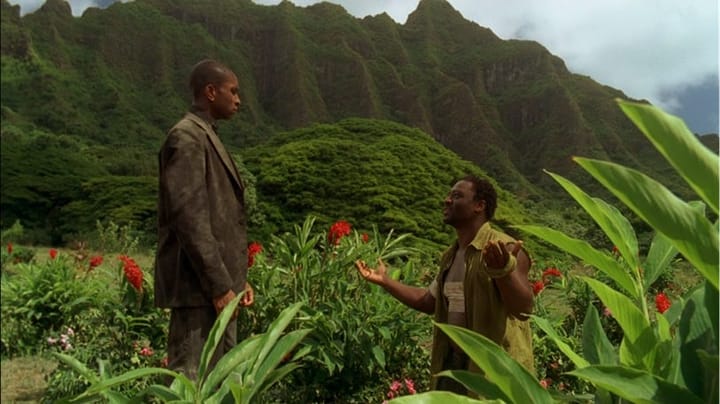

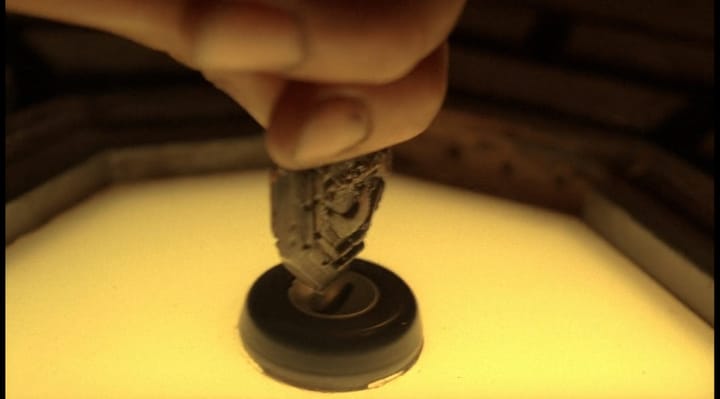
Comments ()